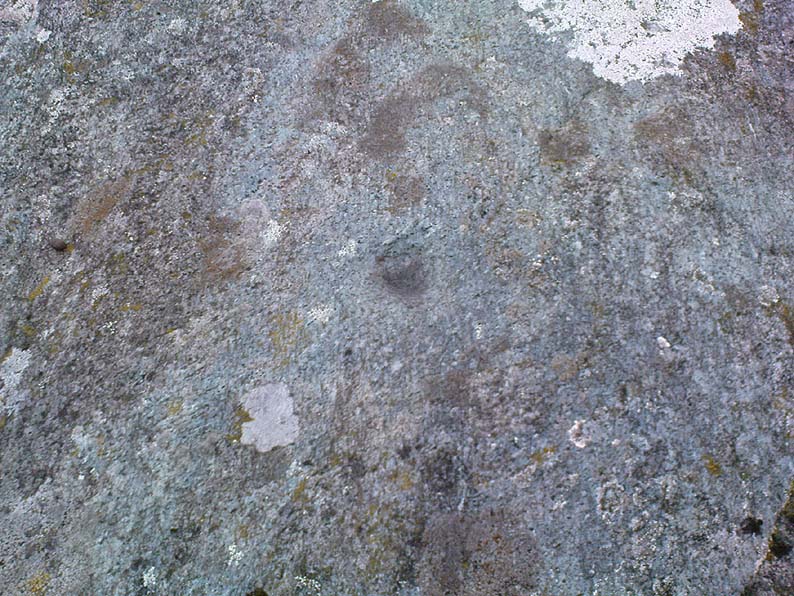Cup-Marked Stone: OS Grid Reference – NN 564 364
Truly troublesome if you aint into walking. Many ways up, but the easiest has to be the zigzagging trackway up from the valley bottom just by The Green a few hundred yards past Lochay Power Station, up the southern edge of Creag na Cailleach. At the end of the trackway, take the stream uphill for a few hundred yards and watch out for the rocky rise to your right (east). Head for it and check out the rocks there. You’ll find it!
Archaeology & History

I’m not sure that anything’s previously been written about this curious single cup-marked boulder. I say ‘curious’, simply because of the location and position of the clear cup-mark on this near-gigantic piece of embedded stone. We walked upon the rocky outcrop south of Creag na Cailleach (above the tree-line where the land levels out) and first saw the cup-marking at the top-end of this huge rock (amidst a number of others) on the large rise a coupla hundred yards west of Allt na Ceardaich. And as the carved cup was on the top-end of the boulder, I was expecting to find much more of the rock with other motifs scattering its body — but was amazed to find that this was the only single cup-marking on an otherwise huge stone. A mixture of bewilderment and disappointment came over me as I shook my head in disbelief that only a single cup had been scribed into an otherwise massive rock.

However, the light was poor with low cloud and it was nearing sunset, so there may have been other aspects to this carving which we missed out on. One other ‘possible’ cup-mark might have been done, but it seemed very dubious even in the poor light. I was all for having another look at it the following day; but wandering halfway up a mountain just to see if this was the only cup-marking on this outcrop was summat my daughter wasn’t into doing! So the site must await another mad cup-and-ring-crazed traveller on another day to get a more detailed inspection! George – are you out there anytime soon!?
© Paul Bennett, The Northern Antiquarian
The map could not be loaded. Please contact the site owner.
Cup marks may owe there origin to river-stones formed in millstone grit when the silts were laid down in tropical deltas millions of years ago.Historical period erosion led to the ‘freeing’ of these round stones leaving only the ‘cup’ impression.
Cephalopods are often found fossilised in Pennine milltone grit, many are spiral in form and are more than likely the origin of most of the carved rock spirals, later enhanced by human hand, we see today. Before the mid eighteenth century the origin of fossils was generally regarded in terms of superstition and myth. Many differing accounts across different cultures explained how these fossils came to be and interesting folklore traditions developed regarding these stones. Frequently fossils were ascribed to have magical or medicinal properties.
Cup marks may owe there origin to river-stones formed in millstone grit when the silts were laid down in tropical deltas millions of years ago. Historical period erosion led to the ‘freeing’ of these round stones leaving only the ‘cup’ impression.
A knowledge of basic geology and ancient folklore may answer many unsolved questions. EG: Some geologists hold to the idea that the Ilkley Moor ‘Swastica Stone’ is nothing more than the overworked (‘hand of man’) imprint of a Cephalopod.